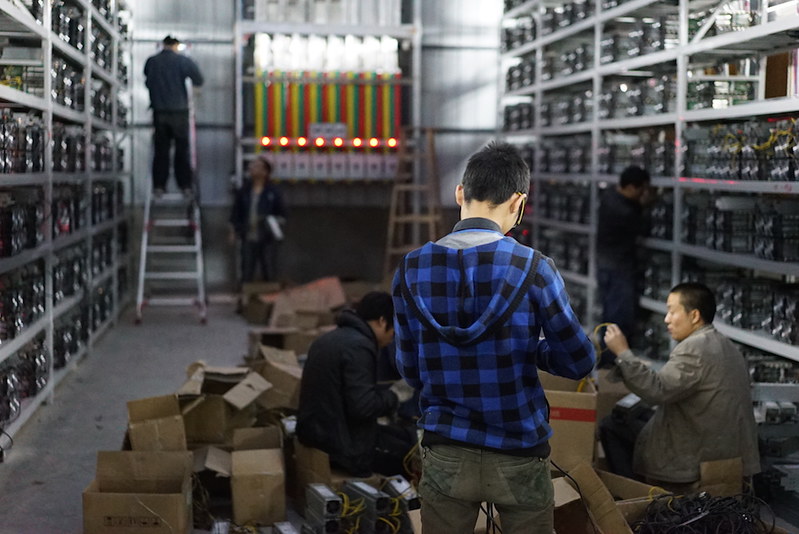Two months after the network’s halving event, it’s harder than ever to mine bitcoin.
Bitcoin mining difficulty, a measure of how hard it is to compete for block rewards on the network, just set a new record high of 17.35 trillion around 12:00 UTC on Monday. This marks a 9.89% jump from the previous record of 15.78 trillion posted on July 1, Cryptox.trade’s blockchain explorer shows.
The new record comes a little over two months after bitcoin’s halving on May 11, which reduced the block subsidy from 12.5 bitcoin per block to the current 6.25 bitcoin, per the network’s design. The latest figure also surpasses the pre-halving high seen in early March.
The increase in difficulty reflects increasing computing power being applied to mining bitcoin. The record hashrate also seen Monday signals that investment in state-of-the-art mining machines continues to grow after the halving, even though the price of bitcoin has remained stuck in a range between $9,100 and $9,500 since early July.
See also: Bitcoin Halving, Explained
Bitcoin mining difficulty is designed to adjust every 2016 blocks, roughly every 14 days, and is based on the hashing power competing for rewards on the network over the period. If more miners have plugged into the network in any one cycle, pushing the average 14-day hashrate up, difficulty will subsequently rise in the next cycle.
“The increase in the network difficulty during the rainy season in Sichuan has happened every year for a few years now,” said Dmitrii Ushakov, chief commercial officer at BitRiver, the largest bitcoin mining hosting provider in central Asia.
Ushakov said with the supply chain and business disruption resulting from the coronavirus pandemic completely resolved in China – estimated to have around 65% of Bitcoin’s mining power – “this has resulted in a surge in the number of miners that were shipped and delivered in the past two months and these miners are now online.”
But there’s another force driving the Bitcoin hashrate’s recent rebound. While many had expected prior to the halving that older-generation mining machines like Bitmain’s AntMiner S9 would soon be phased out as they became unprofitable to operate, the reality may be more complicated.
Jiang Zhuo’er, CEO of BTC.TOP, a bitcoin mining pool based in China that also operates bitcoin miners, said by turning these older-generation devices to a low-voltage mode, one could improve the profit margin to keep them up and running.
With a low average electricity cost of around $0.03 in China’s Southwestern region during the summer rainy season, a standard AntMiner S9 would be operating at loss with bitcoin’s current price and record high difficulty. But available firmware updates could be applied to bring down its electricity consumption to improve the overall profit margin by 20%, a process called “under-clocking.”
While 20% may seem a significant margin increase, in terms of the actual profit, an under-clocked AntMiner S9 can only generate an almost negligible profit of less than $0.5 in 24 hours, even at an electricity rate of $0.03.
Part of why many still choose to operate older models, even without much profit, may be due to a surplus of newly built mining facilities since last year. Typically, bitcoin mining farm operators in China’s Southwestern region would sign agreements with hydro-power plants for a certain amount of electricity over a specified period.
“So mining farms would lower down the offerings to below $0.03, even below $0.02 just so that they’d have enough machines to fill in the capacity,” said Jiang, or even some would just mine themselves because they must pay the agreed electricity to the power plants whether or not they could use up the said amount.
“Although it may look as if some old models are not profitable enough, in reality, they are not shutting down now,” he said. Still, Jiang expects these older machines to be phased out after the end of the rainy season in China (around October) but throughout the summer the hash rate won’t change too much if bitcoin’s price remains static.
“After that, the difficulty could go down because the hash rate coming from newly delivered, more powerful machines may not be able to offset the decline resulting from the shutdown of older-generation equipment like the S9,” he added.
The leader in blockchain news, CryptoX is a media outlet that strives for the highest journalistic standards and abides by a strict set of editorial policies. CryptoX is an independent operating subsidiary of Digital Currency Group, which invests in cryptocurrencies and blockchain startups.




